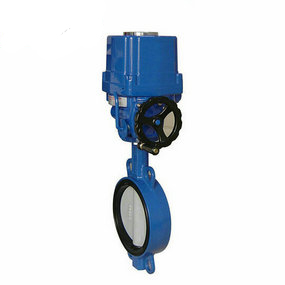Technical specifications for main technical performance of valves
A valve is a device used to control the direction, pressure and flow of fluid in a fluid system. The valve is a device that allows the medium (liquid, gas, powder) in the piping and equipment to flow or stop, and can control its flow. After several years of learning about valves, the main technical performance specifications of valves are summarized as follows:
Strength performance The strength performance of a valve refers to the ability of the valve to withstand medium pressure. The valve is a mechanical product subject to internal pressure, so it must have sufficient strength and stiffness to ensure long-term use without cracking or deformation.
Sealing performance The sealing performance of a valve refers to the ability of each sealing part of the valve to prevent medium leakage, which is the most important technical performance index of the valve. There are three sealing parts of the valve: the contact between the opening and closing parts and the two sealing surfaces of the valve seat; The matching position of packing, valve rod and stuffing box; The connection between the valve body and the valve cover. The leakage at the first place is called internal leakage, that is to say, it can not be closed tightly, which will affect the ability of the valve to cut off the medium. For block valves, internal leakage is not allowed. The latter two leaks are called external leakage, that is, the medium leaks from inside the valve to outside the valve. Leakage will cause material loss, environmental pollution, and even accidents in serious cases. For flammable, explosive, toxic or radioactive media, leakage is not allowed, so the valve must have reliable sealing performance.

After flowing through the valve, the flowing medium will produce pressure loss (i.e. the pressure difference between the front and back of the valve), which means that the valve has a certain resistance to the flow of the medium, and the medium will consume a certain amount of energy to overcome the resistance of the valve. In consideration of energy conservation, when designing and manufacturing the valve, the resistance of the valve to the flow medium should be reduced as much as possible. Hoisting force and moment Hoisting force and moment refer to the force or moment that must be applied to open or close the valve. When closing the valve, it is necessary to form a certain sealing pressure between the opening and closing parts and the two sealing surfaces of the hair seat, and to overcome the friction between the valve stem and the packing, between the threads of the valve stem and the nut, at the end support of the valve stem and other friction parts. Therefore, a certain closing force and closing torque must be applied. During the opening and closing process of the valve, The required hoisting force and moment are variable, and the maximum value is at the final instant of closing or the initial instant of opening. The valve shall be designed and manufactured to minimize its closing force and moment.
Opening and closing speed The opening and closing speed is expressed by the time required for the valve to complete an opening or closing action. Generally, there are no strict requirements on the opening and closing speed of valves, but some working conditions have special requirements on the opening and closing speed. For example, some require rapid opening or closing to prevent accidents, and some require slow closing to prevent water hammer, which should be considered when selecting valve types. Action sensitivity and reliability This refers to the sensitivity of the valve to respond to changes in medium parameters. For throttle valve, pressure reducing valve, regulating valve and other valves used to regulate medium parameters, as well as safety valve, drain valve and other valves with specific functions, their functional sensitivity and reliability are very important technical performance indicators. Service life refers to the durability of the valve, which is an important performance indicator of the valve and has great economic significance. It is usually expressed by the opening and closing times that can ensure the sealing requirements, or by the service time.
Previous: Application of valves in industry
Next: Causes of valve sealing surface damage

